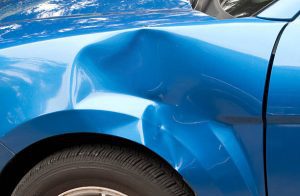Preparing Your Car for Long Trips


Preparing Your Car for Long Trips


Introduction
Embarking on a long trip in your car can be an exciting adventure, whether you’re heading out on a road trip or traveling to a distant destination. However, before hitting the road, it’s important to ensure that your vehicle is properly prepared. Taking the time to prepare your car before a long trip can help prevent breakdowns, improve fuel efficiency, and enhance overall safety. In this article, we will guide you through the step-by-step process of preparing your car for long trips, ensuring a smooth and enjoyable journey.
Step 1: Check Your Vehicle’s Fluid Levels
Before setting off on your long trip, it’s crucial to check your vehicle’s fluid levels. Here’s what you need to do:
Engine Oil
Check the engine oil level by locating the dipstick, usually located near the engine. Remove the dipstick, wipe it clean, reinsert it, and then remove it again to check the oil level. If the level is below the recommended range, add the appropriate type and amount of oil.
Coolant
Check the coolant level in the coolant reservoir. Ensure that the level is between the minimum and maximum marks. If needed, add a 50/50 mixture of coolant and water to top it up.
Transmission Fluid
Locate the transmission dipstick (automatic transmission) or check the level indicator (manual transmission). Follow the manufacturer’s instructions to check the transmission fluid level. If necessary, add the recommended transmission fluid.
Brake Fluid
Check the brake fluid level by locating the brake fluid reservoir. Ensure that the level is within the recommended range. If it is low, add the recommended brake fluid.
Power Steering Fluid
If your vehicle has power steering, check the power steering fluid level. Refer to the owner’s manual for the exact location of the reservoir. Ensure that the level is within the recommended range.
Step 2: Inspect Your Tires
Your vehicle’s tires are crucial for a safe and comfortable trip. Follow these steps to inspect your tires:
Tire Pressure
Check the tire pressure using a tire pressure gauge. Refer to the vehicle’s manual or the tire placard (usually located on the driver’s side door jamb) for the recommended tire pressure. Inflate or deflate the tires as needed to match the recommended pressure.
Tire Tread Depth
Inspect the tread depth of your tires. Insert a penny into the tread grooves with Lincoln’s head facing downwards. If you can see the top of Lincoln’s head, it’s a sign that the tread is worn, and it’s time to replace the tires.
Tire Damage
Check for any signs of tire damage, such as cuts, bulges, or uneven wear. If you notice any significant damage, it’s advisable to replace the tire before your trip.
Spare Tire
Don’t forget to check the condition and pressure of your spare tire. Ensure that it is properly inflated and in good working condition in case of emergencies.
Step 3: Test Your Vehicle’s Lights and Signals
Properly functioning lights and signals are crucial for visibility and safety. Perform the following checks:
Headlights and High Beams
Test both your low beam headlights and high beam headlights to ensure they are working correctly. Replace any bulbs that are burned out.
Brake Lights
Ask someone to stand behind your vehicle while you press the brake pedal to check if the brake lights illuminate. Replace any non-functioning brake lights.
Turn Signals
Test your vehicle’s turn signals to ensure they are working correctly. Replace any bulbs that are not functioning.
Hazard Lights
Activate your hazard lights and verify that all hazard lights are blinking simultaneously. Replace any bulbs that are not working.
Reverse Lights
Have someone stand behind your vehicle while you engage the reverse gear to verify that the reverse lights are illuminating properly. Replace any non-functioning bulbs.
Step 4: Check Your Battery
A reliable battery is essential for a trouble-free trip. Follow these steps to check your battery:
Battery Terminals
Inspect the battery terminals for any signs of corrosion or loose connections. If necessary, clean the terminals using a battery terminal cleaner and tighten any loose connections.
Battery Charge
Check the battery charge using a voltmeter or a battery tester. If the voltage is below the recommended range, it may be time to replace the battery.
Step 5: Inspect Your Wiper Blades and Washer Fluid
Clear visibility is crucial for safe driving, especially during inclement weather. Follow these steps to inspect your wiper blades and washer fluid:
Wiper Blades
Check the condition of your wiper blades. Look for signs of damage, such as cracks or splits. If the blades are worn or damaged, replace them before your trip.
Washer Fluid
Ensure that your washer fluid reservoir is filled. It’s essential to have an adequate supply of washer fluid for cleaning your windshield during the trip.
Step 6: Prepare an Emergency Kit
Being prepared for unexpected situations is vital during long trips. Assemble an emergency kit that includes the following items:
First aid kit
Jumper cables
Spare tire and jack
Flashlight with extra batteries
Basic tools (screwdriver, pliers, adjustable wrench, etc.)
Roadside flares or warning triangles
Blanket and extra clothing
Drinking water and non-perishable snacks
Cell phone charger
Step 7: Plan Your Route and Take Breaks
Before starting your journey, plan your route and identify rest stops along the way. It’s crucial to take regular breaks to rest, stretch, and stay alert during the trip. Also, familiarize yourself with the traffic laws and regulations of the areas you’ll be driving through.
Conclusion
Preparing your car for long trips is essential for a safe, comfortable, and hassle-free journey. By following the step-by-step guide outlined in this article, you can ensure that your vehicle is in optimal condition before hitting the road. Remember to check your vehicle’s fluid levels, inspect your tires, test your lights and signals, check your battery, inspect your wiper blades and washer fluid, and prepare an emergency kit. By taking these precautions and planning your route wisely, you can enjoy a memorable and enjoyable trip without any unexpected vehicle-related issues.








